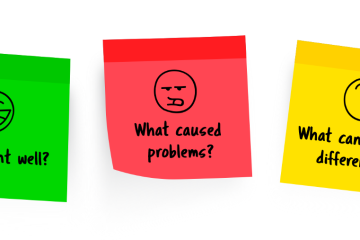The all you need to know guide before you start your search on how to create an Agile marketing team or company. Spoiler alert: If you haven’t got a team or company yet you are way ahead of teams or companies that need to change to becoming Agile ;-). But don’t worry if you already have a team and / or a company I will help you!
The key principles
Agile marketing is an approach to marketing that emphasizes flexibility, collaboration, and responsiveness to change. It draws inspiration from Agile software development methodologies, aiming to break down large marketing projects into smaller, manageable tasks that can be completed in short iterations called sprints. The key principles include:
- Iterative and Incremental Approach: Rather than planning large campaigns upfront, Agile marketing focuses on delivering small increments of value in short cycles. This allows marketers to adapt to changing market conditions and customer feedback more effectively.
- Cross-Functional Teams: Agile marketing teams are typically multidisciplinary, consisting of members with diverse skills such as design, content creation, analytics, and development. This structure promotes collaboration and enables teams to work together towards common goals.
- Continuous Learning and Improvement: Agile marketing encourages experimentation and learning from both successes and failures. By regularly reviewing performance metrics and customer feedback, teams can identify areas for improvement and make adjustments accordingly.
- Customer-Centricity: Agile marketing prioritizes customer needs and preferences, focusing on delivering value to customers through personalized and targeted campaigns. This requires marketers to continuously gather customer insights and incorporate them into their strategies.

7 steps to transform
- Define Clear Goals and Objectives: Start by identifying the goals you want to achieve with your marketing efforts. These goals should be specific, measurable, achievable, relevant, and time-bound (SMART).
- Form Agile Teams: Assemble cross-functional teams with members who possess a diverse set of skills necessary for executing marketing campaigns. Ensure that team members understand their roles and responsibilities within the Agile framework.
- Adopt Agile Practices: Implement Agile practices such as daily stand-up meetings, sprint planning sessions, and retrospective meetings to facilitate communication, collaboration, and alignment within the team.
- Break Down Projects into Iterations: Divide large marketing projects into smaller tasks or user stories that can be completed within short iterations (usually 1-4 weeks). Prioritize these tasks based on their value and complexity.
- Test and Iterate: Launch campaigns or initiatives quickly and gather feedback from customers and stakeholders. Use this feedback to iterate on your strategies and make improvements in subsequent iterations.
- Measure Performance: Continuously track and measure the performance of your marketing activities against predefined metrics and KPIs. Use this data to assess the effectiveness of your campaigns and make data-driven decisions.
- Embrace Change: Be open to change and adapt your marketing strategies based on evolving market conditions, customer preferences, and feedback. Encourage experimentation and innovation within your team.
By adopting Agile marketing principles and practices, organizations can become more responsive, adaptive, and customer-centric in their approach to marketing, ultimately driving better results and ROI.


0 Comments